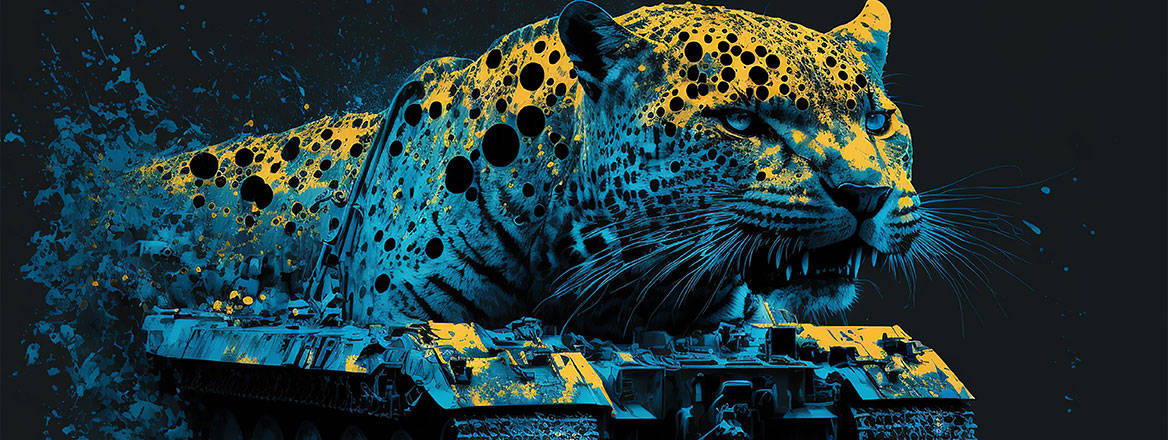Dr Jack Watling

Ukrainian forces are making gains, but the offensive is some way from its decisive phase; we must refrain from premature pronouncements of success or failure.
Ukrainian forces have launched their long-anticipated offensive in an attempt to break through Russian defence lines to liberate the occupied territories. Ukrainian troops have broken through initial fighting positions along a broad part of the front, but remain some distance from Russia’s main defence line. Kyiv has yet to commit the bulk of its forces as its lead elements try to set the conditions for a breakthrough.
The fighting so far has been tough. Russia’s initial fighting positions constituted fox holes and hand-dug trenches, but behind these were complex minefields of anti-tank and antipersonnel mines, covered by Russian UAVs and artillery. The main defence line, still 15–20 km from Ukrainian positions, has properly dug trenches and concrete-reinforced firing posts, tank obstacles, ground-laid cable to coordinate artillery strikes, and even more mines. Behind that are the reserve fighting positions of the third defence line.
The fighting will likely get tougher. As Ukrainian forces penetrate deeper into the defences, they will come into range of more Russian artillery firing posts. Moreover, their own artillery will be able to deliver fewer counterbattery missions, and the Ukrainian lines of advance will become more predictable, as they must follow the breaches identified in the minefields. As Ukrainian troops push forwards, they will also be covered by fewer air defences, and will likely come under greater attack by the Russian Aerospace Forces and aviation.
Given these threats, the Ukrainian military is currently trying to achieve three things. Firstly, there is an intense counterbattery duel being fought, with both sides trying to strike each other’s logistics, command and control, reconnaissance, and artillery systems. The Russians are hunting for Ukraine’s artillery with Lancet UAVs. The Ukrainians are utilising Storm Shadow and GMLRS to try to destroy Russian command and control and munitions stockpiles.
Secondly, the Ukrainians are trying to get the Russians to commit their reserves, moving troops from the third defence line to bolster sectors under pressure. Once these troops are pulled forwards, it will become easier to identify the weak points in the Russian lines, where a breakthrough will not be met by a new screen of repositioned forces.
Success is binary, not linear. The line is either broken or it is not, and Kyiv must shape the battlefield to maximise the probability of a breach
Thirdly, the Ukrainian military is trying to put pressure across the front to advance through the first line of defences in as much breadth as possible. The reason for this is to increase the options for attacking the main defence line and to keep Russian forces uncertain as to where the main effort will be launched. Furthermore, with such a long front, stretching out Russian troops limits their ability to stack units in depth, pulling more forward.
At some point, the Ukrainians will have to decide where to commit their main assault units, and the offensive will enter its decisive phase. This decision must be conditions-based. It isn’t about adhering to some fixed timeline. When these units are committed, the offensive will either achieve a breakthrough or fail. Success is binary, not linear. The line is either broken or it is not, and Kyiv must shape the battlefield to maximise the probability of a breach.
The extent of a success will be determined by how much progress is made on the other side of the breach. If a breach can be achieved, then the critical question will be how many units Ukraine has in reserve to surge forward and exploit the success. If operations are currently methodical, once a breach in the line occurs, speed will be of the essence.
The uncertain variable in the current offensive is Russian morale. Russian units are currently fighting from prepared positions and their command-and-control infrastructure is mostly intact, though some key command posts have been struck. If Russian units can be forced to reposition, however, the poor training and discipline of Moscow’s forces could see the defence become uncoordinated and susceptible to collapse. Bringing about such conditions would require some significant actions by the Ukrainians to get the Russians moving, but it is possible under such conditions for the strength of the defence to crumble rapidly. Ukraine can endeavour to bring such a situation about, but it cannot be counted on.
For Ukraine’s international partners, the summer is likely to be deeply uncomfortable. Losses will mount and success will take time. It is vital, however, that there is no diminution in the strengthening of the training programmes allowing Ukraine to continue to generate combat units, or the mobilisation of defence industry to put supply to the Ukrainian military on a sustainable basis. However much territory is liberated in this offensive, the critical variable is convincing the Kremlin that even if its defeat comes in stages, it is coming.
The views expressed in this Commentary are the author’s, and do not represent those of RUSI or any other institution.
No comments:
Post a Comment